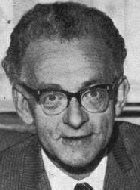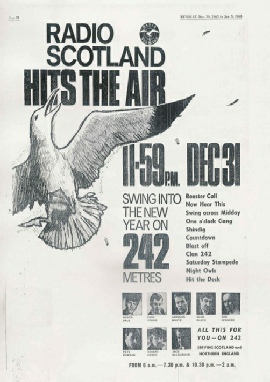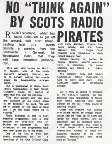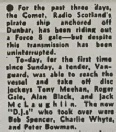© 2014-


Radio Scotland - History
In October 1964 a company, City and County Commercial Radio (Scotland) Ltd., was formed by a group of Scottish businessmen and registered in the Bahamas. Publicly the directors of the company declared that they wanted to apply for local radio licences in various Scottish cities, however, the real and rather thinly disguised reason for the company's formation was to launch an offshore commercial radio station to serve the whole of Scotland.
During the s ummer of 1965 Tommy Shields (the driving force behind the project to launch Scotland’s only offshore radio station) located an ex-
ummer of 1965 Tommy Shields (the driving force behind the project to launch Scotland’s only offshore radio station) located an ex-
First news of plans for Radio Scotland appeared in the Glasgow Evening Times on 9th December 1965 and for a few weeks speculation was rife about the opening date for the new station.
Work on the Comet was only completed shortly before Christmas 1965 and the radio ship was again towed from the Channel Islands towards her proposed anchorage near Dunbar in the Firth of Forth off the East coast of Scotland. However, during the journey the tow line snapped and the problems encountered in securing a replacement line meant that the Comet did not finally arrive at her anchorage until the early hours of 30th December 1965, three days later than had been planned.
Consequently there was no time for proper test transmissions to take place as the planned opening date for the new Scottish station was Hogmanay, 31st December 1965, at 10.30pm. Because the ship had been delayed the crew had to hurriedly assemble the broadcasting equipment and the first transmission for Radio Scotland was eventually made just ten minutes before midnight on 31st December 1965.
The declared programme policy for Radio Scotland was that 60% of output would consist of pop music, with the other 40% being largely of traditional Scottish interest. Radio Scotland took advantage of the recent staff purge at Radio Caroline South by engaging some of its former DJs to help launch the new station. Radio Scotland also established land-
Radio Scotland, was beset with technical problems and forced to transmit on low power until 16th January 1966 when a vital component arrived from the USA, enabling the station to increase its transmitter output to 20Kw. During the first six weeks of 1966 the station also experienced various problems with its generator and aerial mast, causing a number of breaks in transmission and frequent temporary closures.
Despite the increase in power Radio Scotland's signal, whilst good in Edinburgh and along the east coast remained poor on the western side of Scotland, particularly in the commercially important Glasgow area. Additionally, at night the signal was badly affected by interference from Europe, so a decision was taken to change Radio Scotland's frequency, although the announced wavelength for Radio Scotland continued to be 242m.
The station's programme format too quite soon changed substantially from what had originally been envisaged. Radio Scotland abandoned its promised emphasis on Scottish programming and concentrated instead on a Top 50 chart format, with only a limited amount (about 15%) of airtime being given over to Scottish programmes such as "Ceilidh" and "Larry Marshall and the One o'Clock Gang". The station also started promoting itself as 'Big S' in imitation of Radio London's 'Big L' slogan.
Despite all its technical and programming difficulties Radio Scotland's very presence off the northern coast of Britain had a tremendous immense impact on listeners, who were used to a largely London-

Radio Scotland opening, 31st December 1965

Tommy Shields

Click on picture to enlarge
Press advert for launch of Radio Scotland
(Click to enlarge)
Daily opening announcement

News of the World



McKays Drapers




Glasgow Evening Times
9th December 1965
History
Key Dates
Ship and Location
Technical
Staff
Programmes






For more about Radio Scotland visit
In the Special Exhibitions Gallery on the Ground Floor


Glasgow Evening Times
11th January 1966
Treasure Chest





Back to Britain Gallery


Back to Radio Scotland
